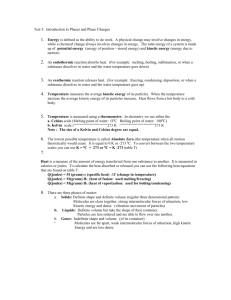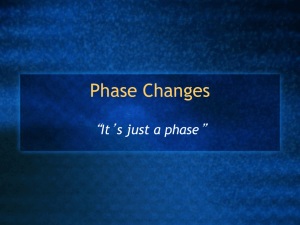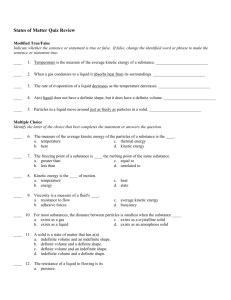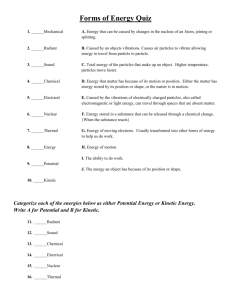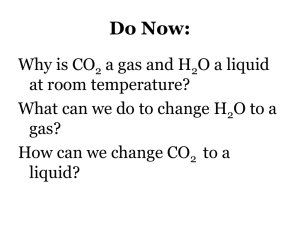States of MAtter
advertisement
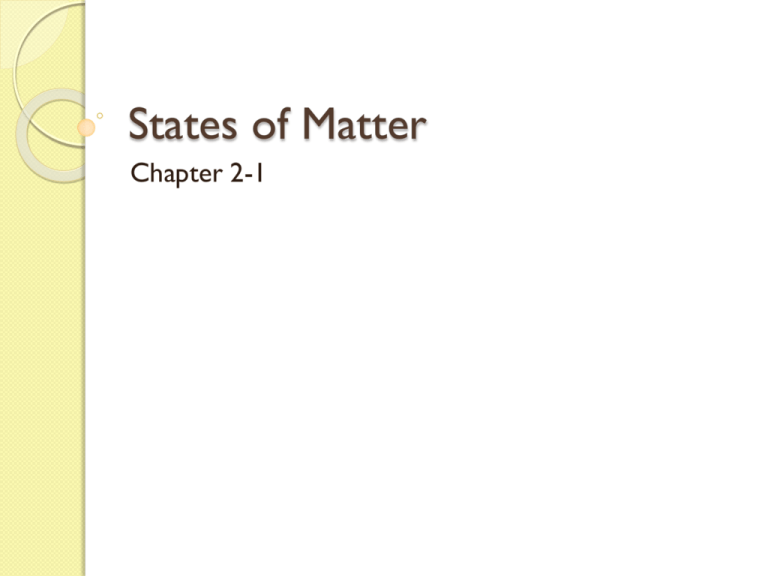
States of Matter Chapter 2-1 What are the three main states of matter? Solid Liquid Gas Why are there different states of matter? Depends on how their particles are arranged and how they move What causes particles to move? Particles move due to kinetic energy Amount of kinetic energy is measured by temperature The greater the temperature, the faster the particles Particles stop moving at absolute zero (-273.15°C) Solids Definite shape Definite volume Particles packed very close together Low kinetic energy Particles vibrate slowly in place Can be crystalline or amorphous Liquids No shape of its own (takes shape of it’s container) Definite volume Particles are packed somewhat close but can move freely (fluid) Moderate kinetic energy Particles move at a moderate speed Gases No definite shape Changes volume Particles are spread apart (Fill all the space available to them) High kinetic energy Particles move quickly Fluid Changes of State A substance changes states when energy levels increase or decrease significantly by the addition or removal of heat. As temperature increases, energy levels increase. As temperature decreases, energy levels decrease. Changes between a Solid and Liquid Melting change in state from a solid to a liquid added thermal energy (heat) makes water molecules vibrate faster causing them to break free from their fixed position. melting point of water = 0°C Freezing change in state from a liquid to a solid Water loses energy to the cold air and moves more slowly until it turns to solid ice freezing point of water = 0°C Changes Between Liquids and Gases Condensation ◦ occurs when particles of a gas lose enough thermal energy to change back into a liquid Vaporization (boiling/evaporation) ◦ occurs when the particles in a liquid gain enough thermal energy to form a gas. Two Types of Vaporization Evaporation ◦ takes place only on the surface of a liquid ◦ Water gains energy from ground, air, or sun Boiling ◦ liquid turns to a gas below the surface and at the surface; forms bubbles throughout ◦ boiling point of water = 100°C (at sea level) Changes between a solid and gas Sublimation ◦ Particles of a solid gain enough energy to form directly into a gas without forming a liquid first ◦ Example: dry ice Phase Changes Sublimation Melting Boiling/Evaporating Temp increased Temp increased Ice Temp decreased Freezing Water Temp decreased Condensing Water Vapor Phase Change Diagram

